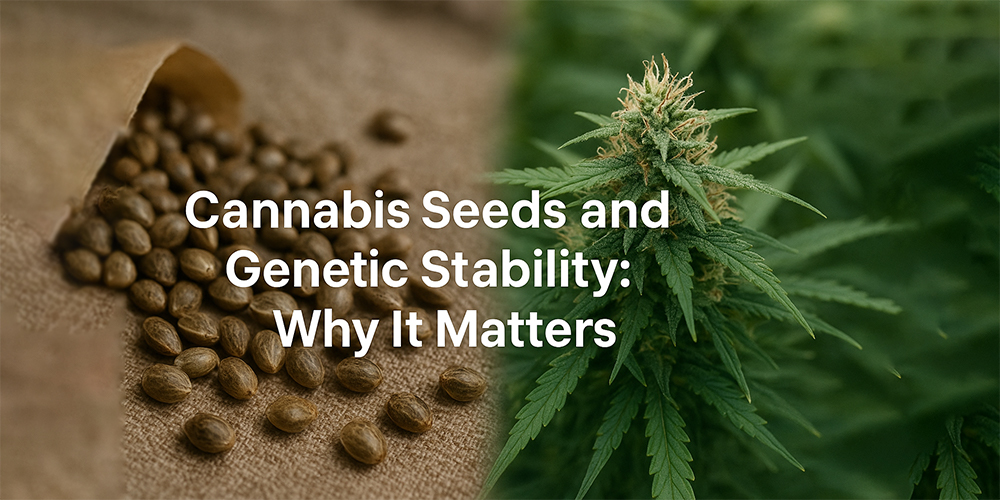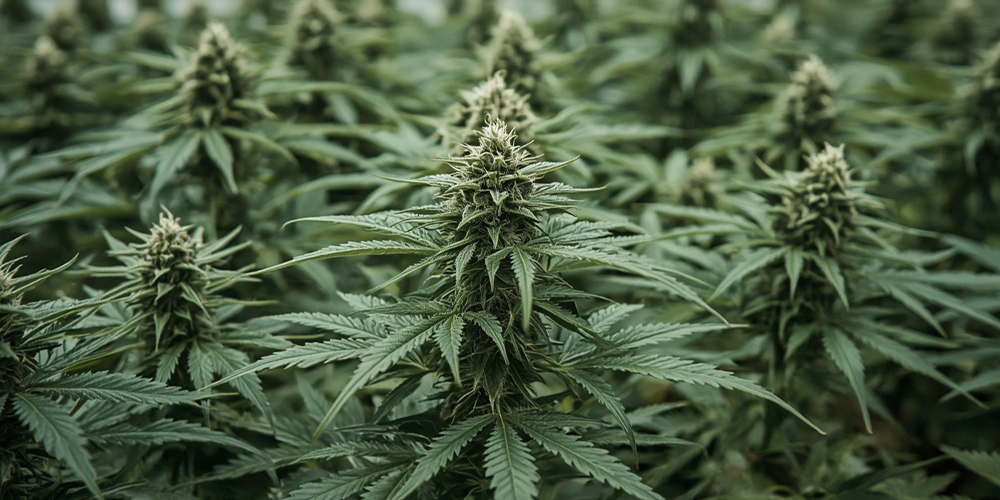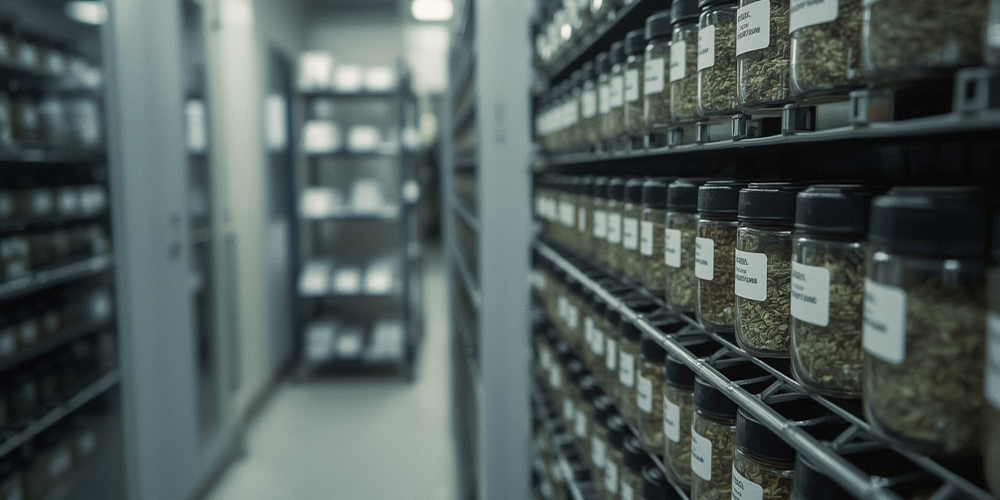
Home » Cannabis Seeds and Genetic Stability: Why It Matters
Cannabis Seeds and Genetic Stability: Why It Matters
Every cannabis seed holds the potential to shape a plant’s future — its height, flavor, potency, and yield. Yet, not all seeds are created equal. For growers, breeders, and medical producers alike, one factor determines whether a harvest will be reliable or unpredictable: genetic stability.
Stable genetics mean seeds will consistently express the same traits from one plant to the next, ensuring uniform growth and dependable outcomes. In contrast, unstable genetics can lead to variability in potency, cannabinoid ratios, and even plant morphology.
This article explores why genetic stability matters, how it’s achieved, and what it means for the future of cannabis cultivation. From breeding methods to storage protocols and advanced genetic tools, we’ll dive into both the science and the practical guidance you need to make informed decisions.
What Is Genetic Stability in Cannabis Seeds?
Genetic stability refers to the predictability of traits passed down from one generation of plants to the next. When a strain is genetically stable, its seeds will reliably produce plants with consistent height, flowering time, cannabinoid profiles, and terpene expression.
Why it matters:
- For growers: ensures crops are uniform and manageable.
- For breeders: provides a solid foundation for developing new strains.
- For medical cannabis: guarantees patients receive consistent therapeutic outcomes.
Key Takeaway: Stable seeds = reliable harvests. Unstable seeds = unpredictable results.

Why Genetic Stability Matters for Growers and Breeders
For Home & Commercial Growers
Stable genetics reduce headaches in the grow room. Plants will mature at similar rates, respond consistently to nutrients, and produce uniform buds. This means fewer surprises and more efficient resource use.
For Medical Cannabis
Inconsistent genetics can lead to fluctuating cannabinoid levels — a critical issue for patients relying on precise THC or CBD dosages. Genetic stability provides the repeatability required for medical-grade cultivation.
For Breeders & Seed Banks
Breeding stable strains builds trust. Reputable breeders spend years refining genetics before releasing seeds. For seed banks, stability ensures customer satisfaction and strengthens their reputation in the industry.
How Genetic Stability Is Achieved
Breeding Methods
- Selective Breeding: Choosing parent plants that exhibit desired traits and crossing them repeatedly.
- Backcrossing: Crossing offspring with one of its parents to reinforce specific traits.
- Inbreeding (IBL Creation): Crossing plants within the same line for multiple generations until traits are “locked in.”
- Generational Stabilization: Breeders often advance to F5 or beyond before considering a strain stable enough for the market.
Advanced Genetic Tools
Recent advancements are reshaping breeding:
- Marker-assisted selection: DNA markers used to track desired traits.
- Genomic mapping: A 2023 study identified 33 genetic markers linked to cannabinoid production, helping breeders predict stability.
- CRISPR and gene editing: Emerging tools that could accelerate precision breeding.
For a deeper look at how breeders refine traits through selective breeding, backcrossing, and generational work, see our guide on The Genetics of Cannabis Seeds: How Breeders Create Strains.
Seeds vs. Clones vs. Tissue Culture
| Propagation Method | Advantages | Limitations | Best Use |
| Seeds | Genetic diversity, easy transport, long-term storage | Variability unless stable, requires breeding work | Breeding new strains, long-term preservation |
| Clones | Genetic uniformity, fast production | Susceptible to disease, genetic drift over time | Commercial uniform grows |
| Tissue Culture | Preserves purity, rejuvenates genetics, scalable | Requires lab expertise, higher cost | Preserving elite genetics, medical cannabis |
Key Insight: A balanced strategy combines seeds for diversity and preservation, clones for immediate uniformity, and tissue culture for long-term purity.
Preservation of Cannabis Genetics
Seed Banks and Storage Protocols
Seed banks follow strict protocols:
- Storage conditions: Seeds remain viable longest at –20°C with low humidity.
- Viability testing: Regular germination tests ensure genetic lines remain active.
- Regeneration cycles: Periodically growing and re-collecting seeds to prevent genetic drift.
Emerging Methods
- Cryopreservation: Freezing tissue or seeds in liquid nitrogen to preserve rare or endangered genetics.
- International seed banks: Cannabis breeders are beginning to adopt agricultural best practices, similar to how staple crops are preserved worldwide.

Risks of Genetic Instability
- Genetic Drift in Clones: Over many cycles, clones may accumulate mutations or show altered performance.
- Unstable Generations: F2 and beyond often display unpredictable phenotypes.
- Environmental Stress: Epigenetic changes caused by stress can alter gene expression even in otherwise stable lines.
Key Takeaway: Instability introduces unpredictability in cannabinoids, terpenes, yields, and even disease resistance.
Regulatory and Market Implications
- Seed Certification: In agriculture, seed certification ensures genetic purity. Cannabis is moving toward similar systems, especially in medical markets.
- Breeder Rights and IP: Stable genetics are valuable intellectual property. Patents and licensing agreements are becoming more common.
- Medical Standards: Regulatory bodies increasingly demand genetic stability as a prerequisite for pharmaceutical-grade cannabis.
When choosing seeds, it’s equally important to consider lab verification for quality and consistency — explore why this is critical in our article Lab-Tested Cannabis Seeds: Why They Matter.
Practical Guidance for Growers
- Choose Reputable Sources: Buy from breeders or banks with a track record of stability.
- Look for IBL or Feminized Lines: More consistent results than random hybrids.
- Observe Your Grow: Wide variation in plant morphology may indicate unstable genetics.
- Preserve Your Favorites: Use cloning or tissue culture to maintain desirable traits.
Conclusion
Genetic stability is the backbone of successful cannabis cultivation. Whether you’re a home grower seeking uniform plants, a breeder building reliable strains, or a medical producer ensuring patient safety, stable genetics are non-negotiable.
By understanding how stability is achieved, how seeds differ from clones, and how preservation strategies safeguard genetic purity, you gain the tools to make better choices in cultivation. As genomic science advances, expect even greater precision — and even more reliable cannabis seeds in the future.
FAQs
1. What does genetic stability mean in cannabis seeds?
It’s the ability of seeds to produce uniform plants with predictable traits.
2. Why are F1 seeds more stable than F2 seeds?
F1 hybrids are the first cross of two inbred parents, leading to uniformity. F2s reshuffle traits, creating variability.
3. Can clones lose genetic stability?
Yes. Over time, clones can accumulate mutations or suffer from stress-induced changes.


One Response